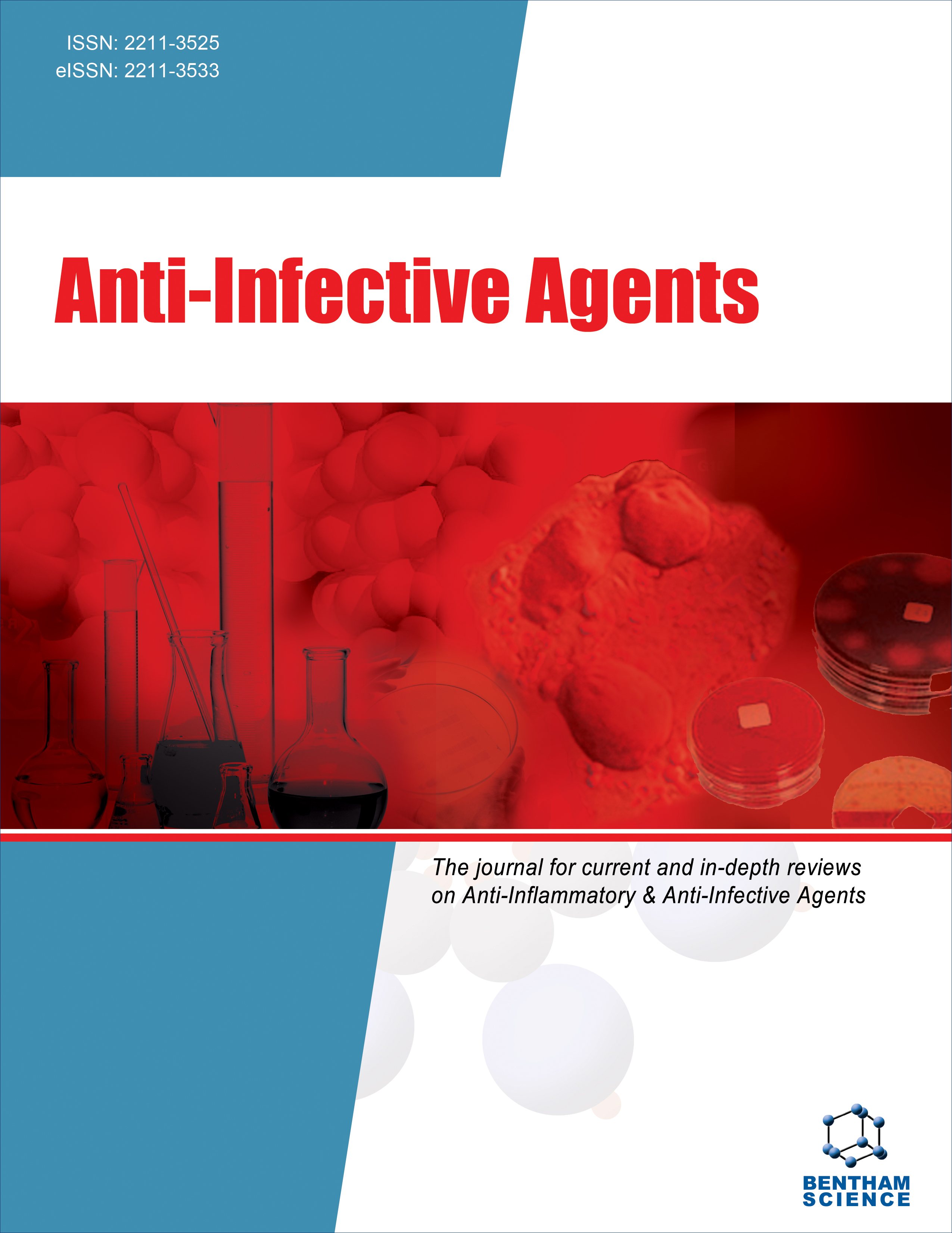
Full text loading...
We use cookies to track usage and preferences.I Understand

The urgent need for new antimicrobial compounds arises from the growing threat of multidrug-resistant human pathogens responsible for infectious diseases. The indole moiety, a prevalent heterocyclic ring system found in nature, is a key structural element in many pharmaceutical agents due to its wide range of biological activities. Bis(indolyl)methanes, in particular, have emerged as promising candidates for antibacterial activity.
This study aimed to evaluate the antibacterial activity of nine bis(indolyl)methane derivatives against a range of pathogenic bacterial strains responsible for various human diseases.
The compounds were synthesized using a solvent-free method, and their antibacterial activity was evaluated using the disk diffusion assay. The minimum inhibitory concentration (MIC) of the active compounds identified in the disk diffusion assay was determined by the microtiter broth dilution method in 96-well microtiter plates. Bacterial strains in the mid-log phase of growth were utilized. Bacterial suspensions equivalent to 0.5 McFarland standards were prepared by suspending the bacterial inoculum in sterile water. A working concentration of 100 µg/mL was achieved by diluting the test compounds in 100% DMSO.
The antimicrobial activity of nine synthetic compounds was evaluated against nine medically significant pathogenic strains. These include Pseudomonas aeruginosa, Bacillus cereus, and Shigella flexneri, known for producing toxins that cause acute foodborne illnesses, as well as Escherichia coli K12 and Enterococcus faecalis, which can disrupt the intestinal barrier in immunocompromised individuals. The results suggest that these compounds have the potential to be effective antimicrobial agents.
Our findings demonstrate the promising antimicrobial activity of the synthesized compounds, with 1-ethyl-3-((1-ethyl-1H-indol-3-yl)(phenyl)methyl)-1H-indole emerging as the most potent, significantly inhibiting most tested bacterial strains. These results highlight the potential for developing novel compounds for antibacterial treatment.

Article metrics loading...

Full text loading...
References


Data & Media loading...
Supplements